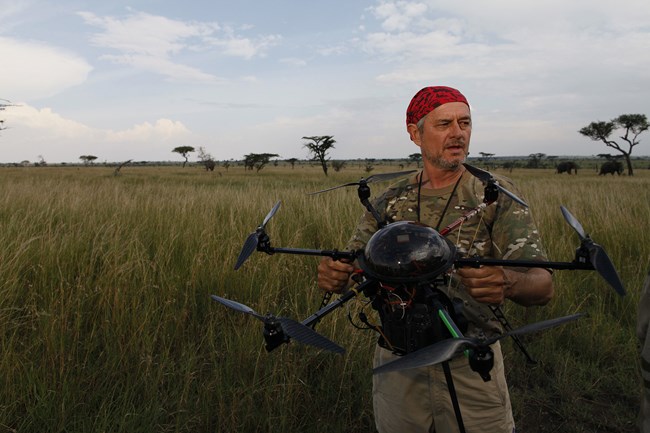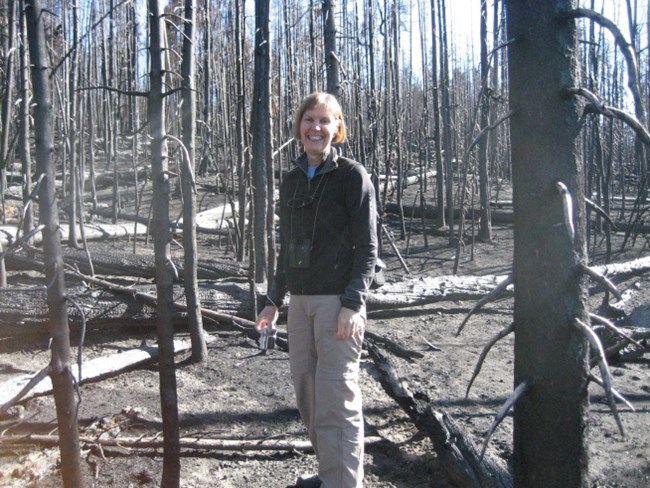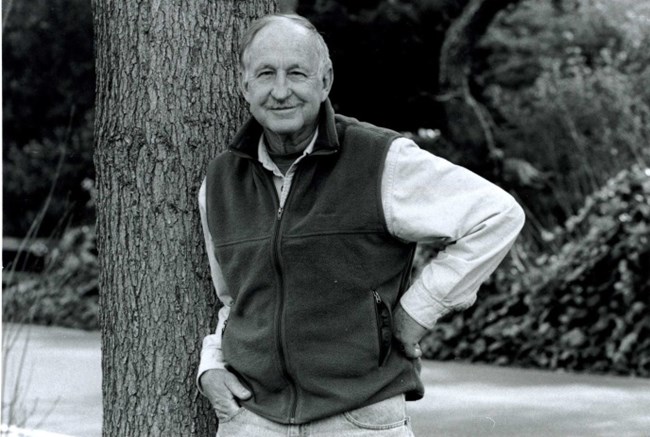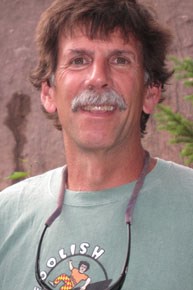|
The Biennial Scientific Conference on the Greater Yellowstone Ecosystem typically includes named lectures in honor of notable influences Aubrey L. Haines, past Yellowstone National Park historian, and A. Starker Leopold, who greatly influenced National Park Service policy. A third lecture named for Yellowstone's superintendent invites an international leader in conservation to speak about some global aspect of park science and management. Additionally, the conference invites an opening keynote speaker to inspire participants and set the tone for the three day meeting. We are proud to announce the 12th Biennial Scientific Conference Lecturers!

Opening Keynote
Nick has published 27 stories with National Geographic magazine, most recently "The Short Happy Life of a Serengeti Lion" (NGM August 2013), breaking new ground in photographing the king of the beast using infrared, a robot controlled mini-tank for eye-level views, and a tiny, camera carrying electric helicopter. LOOK3 Festival of the Photograph featured this story at its 2013 Festival; it was also featured at The Visa Pour L'Image festival in Perpignan, France at its 25th Anniversary 2013 festival.
The December 2012 cover story of National Geographic magazine, "The World's Largest Trees," featured a 5-page foldout of a 3,200 year-old Giant Sequoia. The image was made during a California blizzard. This built upon the technique used in "Redwoods: The Super Trees" (NGM October 2009), where Nichols broke new ground in photography of the world's tallest trees by using these innovative rigging techniques to create an 84 image composite of a 300-foot-tall, 1,500-year-old redwood tree.
At the heart of Nick's mission is to preserve true wildness. Whether in the redwood forests of California or the acacia plains of Kenya, it must be documented, nurtured and protected. Nick is working to create images that show what we have to gain in caring for this magnificent planet and what we have to lose. Nick is currently based in Yellowstone National Park for a long-term assignment with National Geographic magazine. He is field-directing this massive project on the greater Yellowstone ecosystem to be published as a single issue of NGM in 2015.

A. Starker Leopold Lecture
About the lecture
Dr. Monica G. Turner has been selected as this year's A. Starker Leopold lecture presenter. A. Starker Leopold (1913–1983) was an ecologist, conservationist, and educator, as well as a primary force in the shaping of modern national park policy. As a scientist, he produced more than 100 papers and five books, including classic studies of the wildlife of Mexico and Alaska. As a teacher, he inspired generations of students in numerous ecological disciplines. As an advisor to several Secretaries of the Interior, Directors of the National Park Service, and as chairman of an Advisory Board on Wildlife Management in 1963, Starker led the parks into an era of greater concern for scientifically-based management decisions and a greater respect for the ecological processes that create and influence wildlands.
About Dr. Monica Turner
Dr. Monica G. Turner is the Eugene P. Odum Professor of Ecology in the Department of Zoology, University of Wisconsin-Madison. A native New Yorker, Turner received her BS in biology from Fordham University. Between her sophomore and junior years, an incredible summer spent in Yellowstone as a Student Conservation Association ranger-naturalist stationed at Old Faithful solidified her interest in ecology. She earned her PhD in ecology at the University of Georgia (UGA), conducting research with the National Park Service through the Man and the Biosphere Program and in both Virgin Islands and Cumberland Island National Parks. After a postdoc at UGA, Turner spent seven years as a research scientist at Oak Ridge National Laboratory then joined the UW-Madison faculty in 1994. Her research emphasizes causes and consequences of spatial heterogeneity in ecological systems, focusing primarily on forest ecosystem and landscape ecology. She began research in Yellowstone during the summer of 1988, along with a long-term collaboration with Dr. William H. Romme. She has studied disturbance regimes, vegetation dynamics, nutrient cycling, and climate change in Greater Yellowstone for over 25 years. Her research includes long-term studies of the 1988 Yellowstone Fires, landscape patterns of elk habitat use, interactions between bark beetle outbreaks and fire, and consequences of climate warming for fire regimes. In addition to her Yellowstone work, Turner also studies land-water interactions in Wisconsin, effects of current and past land use on southern Appalachian forest landscapes, and spatial patterns of ecosystem services. She has published over 200 scientific papers; authored or edited six books, including Landscape Ecology in Theory and Practice; and is co-editor in chief of Ecosystems. Turner was elected to the US National Academy of Sciences in 2004, and she received both the ECI Prize in Terrestrial Ecology and the Ecological Society of America's Robert H. MacArthur Award in 2008. She begins serving as President-elect of the Ecological Society of America in August 2014. For more information, please visit http://landscape.zoology.wisc.edu/

Aubrey L. Haines Lecture
About the lecture
Dr. Robert Righter has been selected as this year's Aubrey L. Haines lecture presenter. Aubrey L. Haines (1914–2000) remains the premier historian of Yellowstone. He also participated in shaping the park's history for nearly 60 years, from his first job as a park ranger in the late 1930s through his retirement in 1969 and in the following years, as he continued to produce important historical works from his Arizona home. Educated in forestry and engineering, Aubrey also worked in Mount Rainier National Park and Big Hole National Battlefield, and wrote authoritative histories of both parks. But it is for his work in Yellowstone that he is best known and honored by this lecture series. The Yellowstone Story (1977) may be the single most important book ever published on the park, and his Yellowstone National Park: Its Exploration and Establishment (1974) occupies a unique position as the foremost historical documentation of the park's creation. In the 1960s, he originated the collection now known as the Yellowstone Archives, a branch of the National Archives, and gathered countless rare items, interviews, diaries, and a wealth of other materials into the park's library and museum collection.
About Dr. Robert Righter
Dr. Robert (Bob) Righter is the author or editor of eight books. He earned his PhD at the University of California, Santa Barbara, enjoyed a successful teaching career at the University of Wyoming and the University of Texas at El Paso, and is now a Research Professor of History at the Southern Methodist University. Wind energy has been the focus of three of his books, but his first love is our national parks. He has written on The Battle Over Hetch Hetchy (2006) in Yosemite National Park, but is most devoted to Grand Teton. Crucible for Conservation: The Struggle for Grand Teton National Park, published in 1982, describes the park's early history through its enlargement in 1950. Dr. Righter's new book, Peaks, Politics and Passion: Grand Teton National Park Comes of Age (2014), available through the Grand Teton Association, tells of park issues from the 1960s to the 21st century.

Superintendent's International Lecture
About the lecture
Mr. Craig Groves has been selected as this year's Superintendent's International lecture presenter. In 1997, Yellowstone National Park celebrated its 125th anniversary with the theme, "The Best Idea America Ever Had." The park was an idea that caught on and spread around the world, so that most nations now have established national parks or similar nature reserves. Yellowstone serves as a model in many ways, as these other nations look to learn from our successes, our failures, and our ongoing experiments in research and management of cultural and natural resources. At each Biennial Scientific Conference, the Superintendent's International lecture has featured an address by a leading figure in international conservation on some global aspect of park science and management. This lecture emphasizes the global interchange of ideas and information among members of the conservation and scientific communities.
About Mr. Craig Groves
Mr. Craig Groves is currently a Senior Scientist for The Nature Conservancy's Science for Nature and People Initiative (SNAP; www.snap.is), a collaboration with the Wildlife Conservation Society (WCS) and the National Center for Ecological Synthesis (NCEAS) at the University of California Santa Barbara. SNAP funds and facilitates multi-disciplinary working groups to address some of conservation's most challenging problems. He has also serves as the Series Editor for IUCN's World Commission on Protected Areas (WCPA) Best Practice Guidelines. Prior to the SNAP initiative, Craig directed the Conservation Methods Team in the Central Science group of the Conservancy, a team of social and ecological scientists who work to improve conservation planning and monitoring methods, tools, and applications. From 2002-2007, Craig worked as a conservation biologist and planner for the Wildlife Conservation Society, both in the Greater Yellowstone Ecosystem and in selected international projects. Earlier in his career, Craig launched the Idaho Natural Heritage Program (a cooperative biodiversity inventory program between TNC and state government), worked as a nongame and endangered species biologist for the Idaho Department of Fish and Game, and served as the Director of Conservation Planning for TNC from 1997-2002 where he led the efforts to develop ecoregional biodiversity plans. He has written and published a book on conservation planning (Drafting a Conservation Blueprint, Island Press 2003) as well as numerous popular and scientific articles on conservation planning and on the ecology of at-risk species in the Rocky Mountains. His second book, Conservation Planning: Informed Decisions for a Healthier Planet (with co-author Eddie Game) is due out in December 2014.
|
Last updated: June 16, 2015
